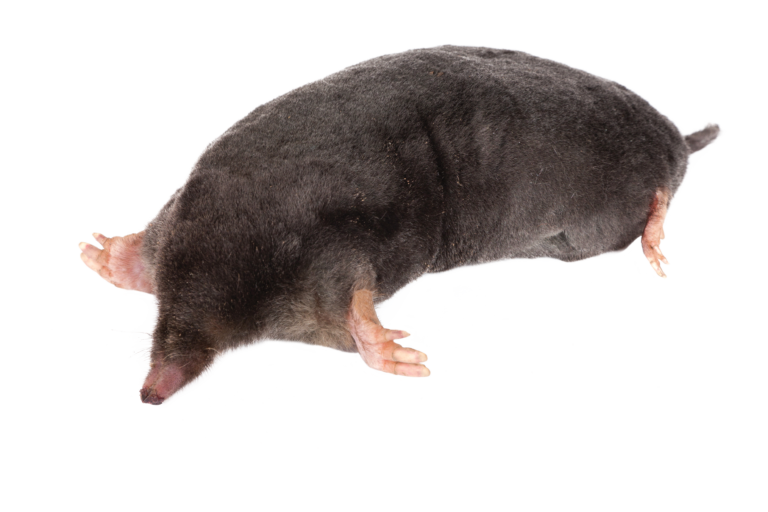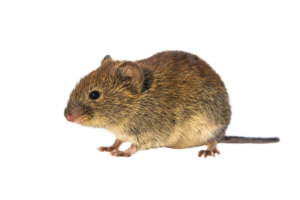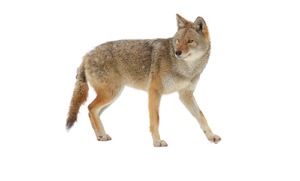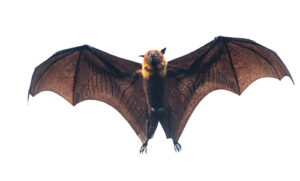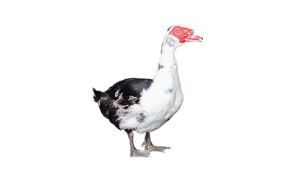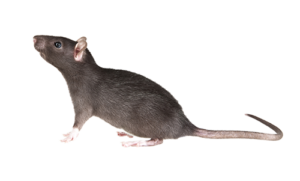In a matter of days, moles can destroy a beautifully landscaped lawn. They do this by creating a web of underground tunnels and unsightly mounds throughout the yard. Many people can live with moles in the backyard, however, over time, the digging can leave a backyard very unappealing. Lawns that are the most threatened, are those that are regularly watered, with rich soil, and home to lots of earthworms. Considered cute by some, many do not like their lawns and gardens damaged by moles. Those wanting help need to call in an expert in mole removal to have these creatures removed from the property.
Habitats
Moles create two different types of tunnels, also referred to as runways. The first one is located just below the surface of the lawn. This is the one that sometimes appears as a small elevated trail on the surface of the lawn. The second tunnel is a bit deeper and is where the moles mostly live. The entrances to the tunnel system are piled up mounds of dirt, appearing similar to mini volcanoes throughout the yard. Moles prefer to live in wooded areas, but these creatures are very capable of surviving in residential areas with beautifully landscaped lawns.
Moles love to eat grubs, which are the larvae of certain types of insects. They also love earthworms. These creatures seek out yards where both grubs and earthworms are plentiful. As long as there is an abundance of food available, moles will stick around.
Concerns
Moles love to dig and the biggest concern with these animals invading a yard is that it will dig up lawns. Other concerns include the destruction of flower beds and damaged plants as they dig underneath destroying roots. As moles dig, they expose stones in the yard, which can damage lawn equipment if not seen. In a short amount of time, these nuisance creatures cause a significant amount of damage. Do not approach a mole and try to remove without assistance. They have very sharp teeth and will bite if threatened. Once spotted, it is best to call in a mole removal expert for help.
Signs
Because moles are rarely seen above ground, it is important to know the signs showing these creatures are present in a yard. Signs of several ridges throughout the yard from tunneling shows a pattern of underground activity. When moles are present, several mole hills are also visible. Knowing the signs and keeping an eye out for mole activity helps identify a problem and homeowners can then call for assistance.
Threats
Outside of destroying a yard, moles do not pose any major threats to humans or domesticated animals. Once they are in the ground, they tend to stay underground. If homeowners can live with the moles and random mole hills popping up, there is no need to struggle with removing the animal. However, removing moles will prevent future lawn and garden damage. If necessary, seek help with mole removal to eliminate any potential damage caused by moles.
Just like any other wild animal, moles can carry a variety of diseases. They are also carriers of parasites, such as tapeworms, fleas, and ticks. Though they tend to stay away from humans and other animals, it is always best to stay away from moles. If possible, keep pets away from dirt mound entrances created by these creatures. If there is concern with pets getting too close or the transfer of disease to humans or other animals, call for help removing the moles from the yard.
Prevention
The best method of preventing moles from entering and destroying a yard is to make the yard less appealing for the animal. Take measures to kill off grubs and insects, which are the primary food source of moles. Avoid over-watering the yard, which attracts earthworms, another food source for moles. Though not always effective, try using a mole repellent on the lawn. However, these do not always work long-term.
For those with gardens, dig a two foot deep trench around the perimeter and fill it with rocks. This will help deter the mole from digging underneath the garden bed. Other than these tips, there is very little that can be done to prevent moles from entering a yard.
Moles vs. Voles
There are six different species of moles in North America, with the most common being the Eastern Mole. These creatures are often confused with voles, with prevention and removal methods differing between the two. Knowing the difference is key to determine prevention measures needed to put in place.
Voles are similar to mice in size and appearance. Moles are much larger with long pointed snouts and paddle-like front paws. They are rarely seen aboveground and it is difficult to determine their existence in a yard without knowing the physical signs to look for. Moles leave large ridges in the yard, with dirt mounds at the entrance. Voles do not. Those trying to determine if their yard has moles or voles need to call a mole removal expert for identification and removal assistance.
Removal
To get rid of moles, start with removing any food sources. If there is nothing to eat, the moles may go away on their own. Just be careful when removing earthworms, because they are also very beneficial for lawn health. There are other DIY methods to remove moles, but don’t struggle testing out different kits and methods. Call for help from an expert in mole removal.
The expert will determine if there are moles, where in the yard they are located, and come up with a plan to remove and exclude the animals from the yard. These technicians are skilled and experienced with handling moles. They are certified, licensed, and take ongoing training programs to maintain their level of expertise. They thoroughly understand the habits of these creatures and can help develop a program to protect the home and yard from future mole infestations.
Moles can destroy a yard in a matter of days. Once they move in, they start tunneling, setting up their habitats, and searching for food. Homeowners will rarely see a mole above ground, but if signs of moles are spotted, help may be needed from a mole removal specialist. Once spotted, reach out for help and take back the yard.
